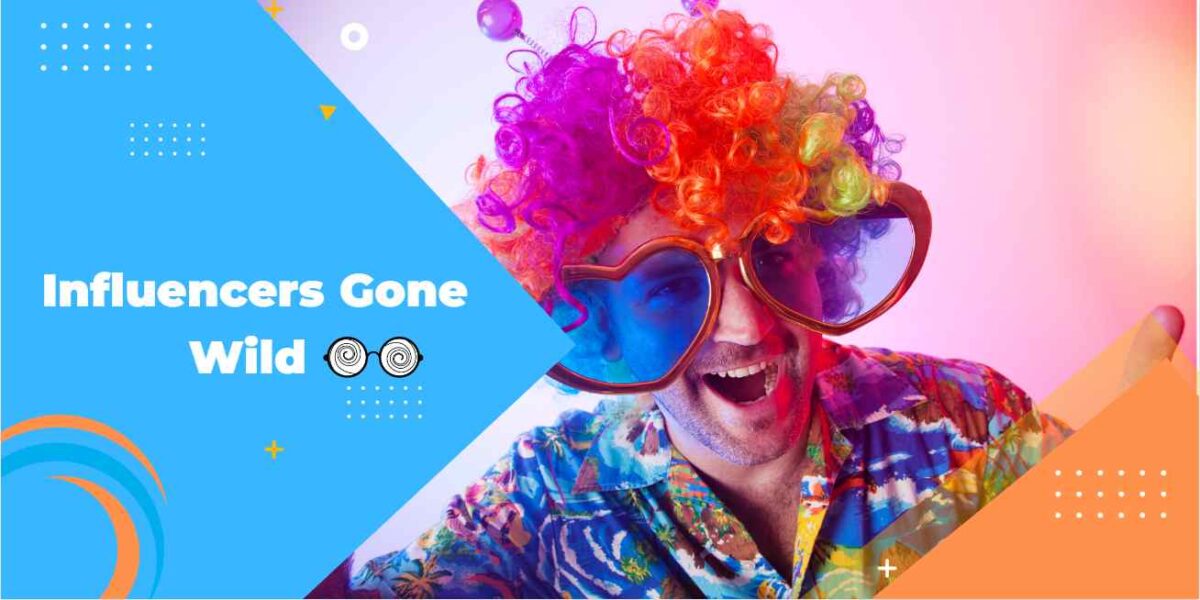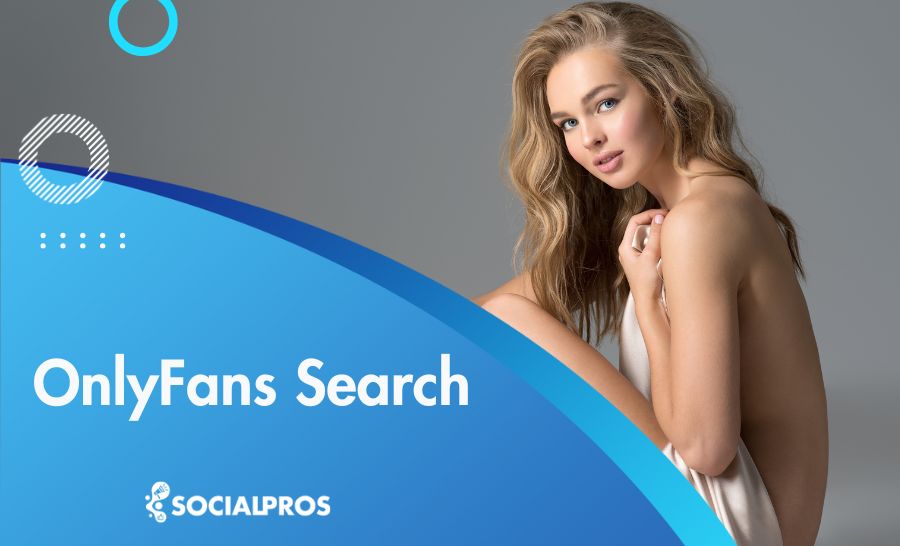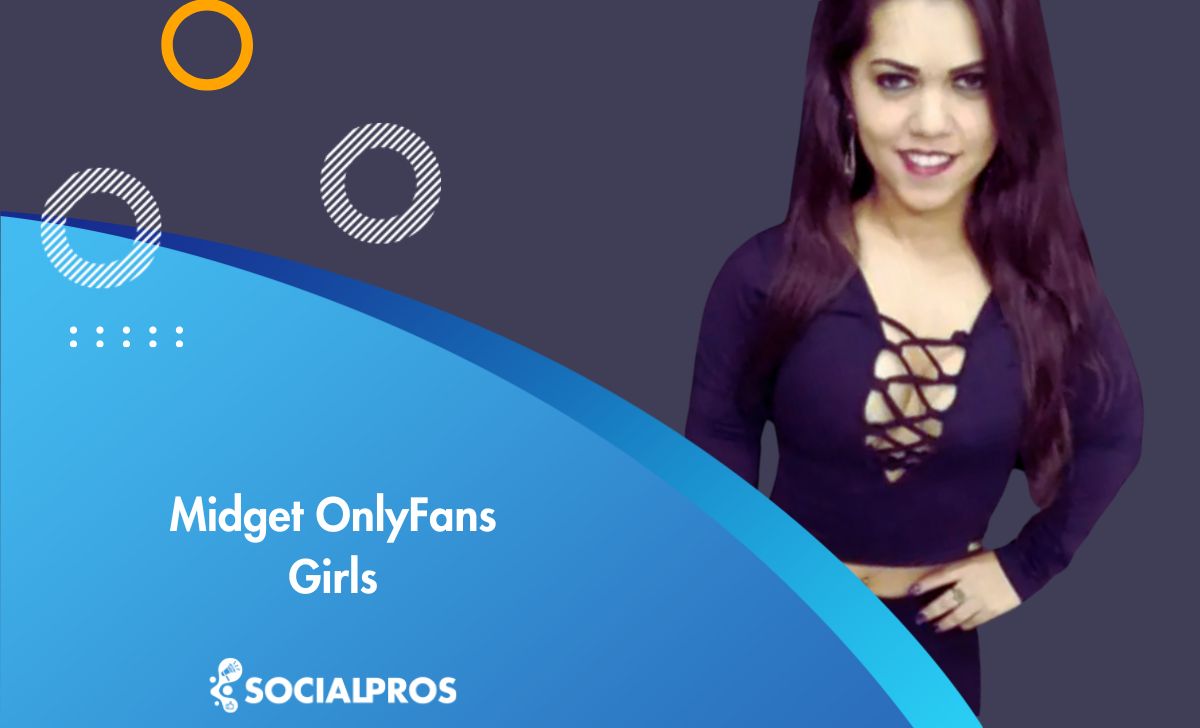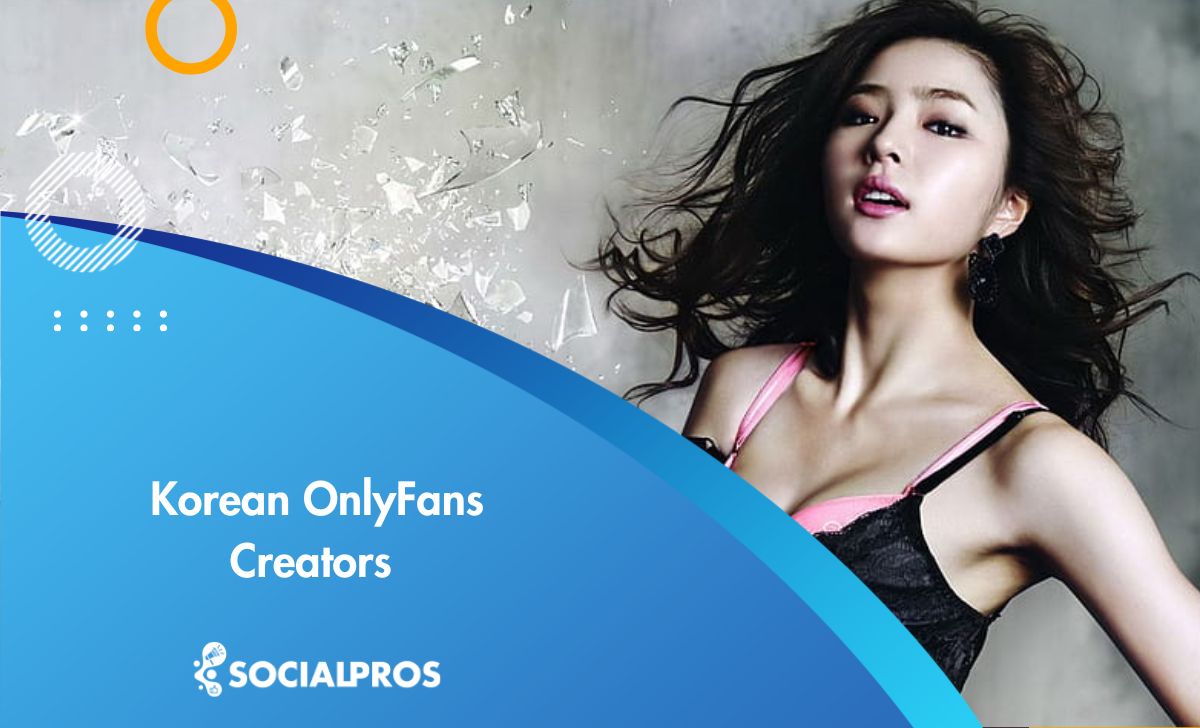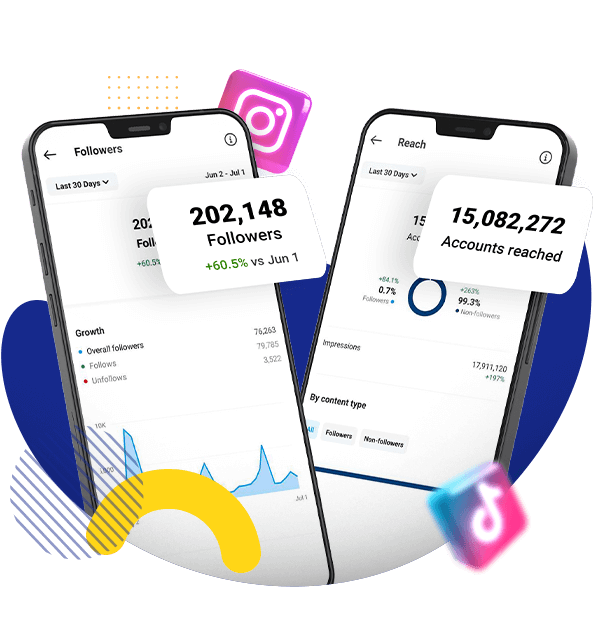Page Contents
The phenomenon of influencers gone wild has become a growing concern in the world of social media.
Influencers have become a new breed of celebrities, offering their followers a glimpse into their lives and influencing their behavior. However, some influencers have taken their fame too far by engaging in questionable and dangerous behavior.
When social media influencers promote harmful products or engage in inappropriate behavior, their actions can go far beyond their own lives.
The problem with influencers gone wild is that they have a responsibility to their followers and sponsors. When they fail to live up to that responsibility, the consequences can be severe, including legal action, loss of sponsorships, and damage to their personal and professional reputation.
Are you curious about the shocking reality of influencers gone wild? Do you want to know about the influencersgonewild.com website?
Look no further as we reveal jaw-dropping examples of influencers who have taken their fame too far. Get ready to witness the consequences of their controversial behavior and the harm it has caused to themselves, their followers, and their sponsors.
What Is Influencersgonewild.com Website?
Website of InfluencersGoneWild! A website that lets down everyone but the unsocialized! Seeing your favorite influencers on this website or hearing about their improper behavior on onlyfans can be rather unexpected.
But why is this so? Influencersgonewild is a pornographic influencer content website. Providing sensual or sexual content is a risky step that does not guarantee 100% favorable results. Influencers who went wild and produced immoral content that was rejected by the community are evidence of this.
For example, Meg Turney was an Influencer that went wild, and her leaked videos from OnlyFans caused her to lose face! Influencers Gone Wild has her leaked OnlyFans videos.
As per Similar Web’s estimation, the influencersgonewild website gets over 21 million views a month, and according to statistics, most of its viewers are from the United States! Although such platforms like influencers Gonewild may initially see a lot of traffic, interest will soon wane.
Morally bankrupt websites can dramatically increase unethical behavior in online and offline communities. They may be trying to attract attention, but they are going in the wrong direction! Since they underestimate their audience’s intelligence and attempt to execute influencer marketing in bizarre and, in some cases, unrelated ways!
Do Influencers Gone Wild Work When It Comes to Marketing on Social Media?
While some influencers may engage in wild or controversial behavior as a strategy to gain attention and increase their following on social media, it is not a sustainable or responsible approach. In fact, it can have severe consequences for their careers and reputation in the long run.
According to Coco Chanel, “Some people believe luxury is the inverse of poverty.” It is not the case. It’s the exact opposite of vulgarity.” It’s only one example of a luxury brand that values morality and rejects vulgar behavior.
As a result, top creators on Onlyfans or influencers who generate material on the Influencersgonewild website will not be able to collaborate with such brands as brands prefer to increase their brand awareness through appropriate influencers.
While going viral or trending on social media can be tempting for influencers seeking fame and fortune, it is important to remember that the consequences of engaging in reckless or unethical behavior can be severe.
They risk losing their credibility, sponsorships, and fanbase. The influencer industry relies heavily on trust and authenticity, and engaging in reckless behavior can significantly damage that trust.
Furthermore, the influencer industry is evolving and maturing, with a growing focus on responsible and ethical behavior. Influencers who prioritize shock value and controversy may find themselves left behind as the industry moves towards a more professional and sustainable approach.
What Are the Main Reasons Behind Influencers Gone Wild?
In the world of influencer marketing, we often hear stories of influencers gone wild. From scandals to controversies, influencers can often find themselves in situations that may impact their brand reputation and credibility.
Here are some possible reasons for influencers gone wild on social media:
- Pressure to remain successful on social media platforms.
- Desire to create controversial or attention-grabbing content to increase engagement and maintain visibility in a crowded market.
- Difficulty separating personal and professional online presence, leading to mixing inappropriate behavior with professional persona.
- The impact of social media on mental health, including pressure to present a perfect image, leads to feelings of inadequacy and low self-esteem.
- Intentionally going wild is a way to gain more followers or attention, even if it means sacrificing reputation or professional image.
- Rebelling against societal norms or expectations or expressing individuality and authenticity in a sea of sameness on social media.
- Poor decision-making or lack of foresight, as individuals in any profession, can make mistakes or exercise poor judgment.
Why Should Brands and Businesses Choose Influencers and Brand Ambassadors Carefully?
In today’s digital age, influencers and brand ambassadors play a critical role in shaping consumer behavior and brand perception. As such, businesses need to choose their partners with care and caution.
Partnering with the wrong influencer or brand ambassador can damage a business’s reputation, diminish trust, and lead to lost revenue. Consumers today are savvy and can spot inauthenticity from a mile away. If a brand ambassador comes across as insincere or inauthentic, it can create a ripple effect that affects the business’s bottom line.
Choosing the right influencer or brand ambassador requires a thorough vetting process. Businesses must look beyond an individual’s follower count and delve deeper into their values, reputation, and audience demographics. The influencer or brand ambassador must align with the business’s values and mission to ensure an authentic partnership that resonates with consumers.
A well-suited influencer or brand ambassador can deliver measurable benefits to a business, including increased brand awareness, engagement, and sales. However, a poorly chosen partner can harm a business’s reputation and credibility, leading to lost revenue and customer loyalty. This is where reliable social media management tools come into play, helping businesses carefully select, monitor, and collaborate with influencers while maintaining a positive brand image across various platforms.
So, as a brand or an aspiring influencer, it’s essential to be aware of the potential risks and challenges associated with this industry.
We’ve compiled a list of influencers gone wild to assist you navigate the potential hazards. But first, let’s learn how you can find the right influencers for your business. So let’s delve right in!
Read More: Top Brands Looking For Ambassadors and Influencers (+ Best Examples & Tips)
How to Find the Right Influencer for Your Brand
As you can see, selecting the right influencers for your brand is critical to achieving the best results. Knowing which influences have gone wild can help you avoid making rash decisions.
The best way to find legitimate influencers to collaborate with is by using a powerful platform. Ainfluencer is a leading influencer marketplace that efficiently connects businesses with suitable influencers. It streamlines the influencer search process by providing an extensive database of influencers from diverse industries.
With Ainfluencer, businesses can easily find the most appropriate Instagram influencers for their campaigns. Its user-friendly platform allows for quick and effortless influencer collaboration. Ainfluencer’s services are top-notch, and it is regarded as one of the best influencer marketplaces out there.
Also, consider the following factors when looking for the finest influencers:
- Identify your target audience and the type of influencer they follow.
- Research potential influencers by checking their social media profiles and engagement rates.
- Evaluate the authenticity and credibility of each potential influencer by analyzing their content and online presence.
- Reach out to the selected influencers and propose a collaboration that aligns with your brand values and objectives.
- Measure the success of the influencer partnership by tracking engagement and conversion rates, and adjust your influencer marketing strategy accordingly.
6 Examples of Influencers Gone Wild
Throughout this section, we’ll take a closer look at six examples of influencers gone wild, analyzing their controversial behavior and the consequences that followed. From inappropriate content to unethical practices and harmful behavior, these case studies provide a cautionary tale of the potential dangers of fame and the need for accountability. So, let’s dive in and see what happens when influencers go off the rails.
Read More: 20 Best Gaming Influencers On Instagram You Must Know
#1 Case Study of Influencers Gone Wild: Logan Paul
Logan Paul, a popular YouTuber with over 20 million subscribers, made headlines in 2018 when he uploaded a video of a dead body in Japan’s forest. In the video, Logan and his friends came across the body of a man who had taken his own life, and they proceeded to film and make jokes about the situation. The video was widely condemned for its insensitivity and lack of respect for the deceased, as well as for the mental health community.
The video sparked outrage and led to a backlash from his fans, as well as his sponsors, who dropped him. He lost over 1 million subscribers, and YouTube temporarily suspended his channel.
He later issued an apology, but it was widely criticized for being insincere and lacking in empathy.
#2 Case Study of Influencers Gone Wild: Corinna Kopf
Corinna Kopf is a popular Twitch streamer and Instagram influencer who has faced controversy for her behavior in the past. One of the instances where she went wild was when she posted a sexually explicit video on her OnlyFans account in 2020. The video was quickly leaked and circulated on social media, leading to widespread criticism and backlash.
In addition to the explicit video, Corinna has also faced criticism for her use of racial insults and offensive language on social media. In one instance, she used a racial slur on a Twitch stream, which led to her receiving a temporary ban from the platform.
Corinna’s controversial behavior has resulted in a loss of sponsorships and a significant decline in her reputation among fans and the wider public. It highlights the importance of influencers being mindful of their behavior, especially on social media where their actions can have significant consequences.
#3 Case Study of Influencers Gone Wild: Belle Delphine
Belle Delphine, a controversial YouTuber and social media influencer caused controversy in 2019 when she sold jars of her own bathwater to fans for $30 each. The event attracted a lot of attention and criticism for being vulgar and inappropriate, with some people calling it a dangerous and unsanitary practice.

In addition to the bathwater incident, Belle Delphine has also faced criticism for her explicit content. She has been accused of promoting a harmful and toxic culture around sex and relationships, especially among her younger fans.
Belle Delphine’s controversial behavior has resulted in a loss of sponsorships and a decline in her reputation among fans and the wider public.
#4 Case Study of Influencers Gone Wild: PewDiePie
PewDiePie is a popular YouTube content creator who has been accused of going wild by creating and sharing controversial content. In one instance, he was criticized for using racial slurs in a live stream, which resulted in the loss of sponsorships and a decline in his reputation among fans and the wider public.
In addition to the racial slur incident, PewDiePie has been accused of promoting extremist and offensive content, including anti-Semitic messages and Nazi imagery. This behavior has drawn criticism from the media and led to several controversies throughout his career.
PewDiePie’s controversial behavior has resulted in a loss of sponsorships and partnerships, as well as a decline in his reputation among fans and the wider public. It highlights the importance of content creators being mindful of their behavior and the impact it can have on their careers and their audience.
#5 Case Study of Influencers Gone Wild: Caroline Calloway
Caroline Calloway is a former Instagram influencer who gained notoriety for her erratic behavior and questionable practices. She was accused of scamming her followers by promising to hold creativity workshops but failing to deliver on her promises.
According to reports, the workshops were disorganized, lacked structure, and failed to provide the promised learning experience. Attendees also alleged that Calloway failed to deliver on some of the promised services, such as providing food and drink and offering personalized feedback on their work.
In addition to the disappointment and frustration felt by attendees, the scandal also sparked broader conversations about the ethics of influencer marketing and the importance of transparency and honesty in social media advertising. The incident highlighted the risks associated with influencers using their platforms to sell products or services without adequate planning or preparation.
Calloway’s behavior ultimately led to a decline in her reputation and a loss of followers.
#6 Case Study of Influencers Gone Wild: Stephanie Matto
Stephanie Matto is well-known for her bizarre practice of selling her farts and other bodily gases and fluids online. She is known as the ‘fart jar girl,’ and she characterizes herself as a ‘fartrepreneur’ after making over $200,000 by selling her farts in jars.
Although this may not appear to be as controversial, it is still wild! According to one of her interviews, she is aware that she is spreading hatred, but she has her own fans! Fewer brands and businesses want to collaborate with such idiot influencers to attract such idiot followers!
Conclusion on Influencersgonewild
Influencer marketing has become a growing concern as some influencers engage in questionable and harmful behavior. Influencers who promote harmful products or engage in inappropriate behavior can negatively impact their followers and sponsors, resulting in severe consequences such as legal action, loss of sponsorships, and damage to their personal and professional reputations.
Here, we discussed five case studies of influencers gone wild, analyzing their controversial behavior and the consequences that followed. These examples provide a cautionary tale of the potential dangers of fame and the need for accountability in influencer marketing.
Ainfluencer provides a SecurePay option for both brands and influencers to ensure safe and guaranteed cooperation. With SecurePay, payment is held by Ainfluencer until the influencer successfully publishes the post according to the agreement. This means that brands can be assured that their payment will only be released once the influencer delivers the promised post, while influencers can trust that they will receive payment for their work.
This helps to build trust and confidence between businesses and influencers, making it easier for them to work together and achieve successful campaigns.
FAQs
Is influencersgonewild.com a Safe and Legitimate Website?
According to research, influencersgonewild.com is a legitimate platform with no problems in terms of malware or anything else. But what is more irrational than disseminating inappropriate and immoral content?
Additionally, Influencersgonewild.com might not be a virus in and of itself, but it might be connected to a PUP that is currently active on your machine. It is a severe issue because it might also result in redirects to other websites.
Can Anyone Be an Influencer?
Theoretically, anyone may join the influencer marketing sector as an influencer with the proper attitude and commitment. Building a powerful personal brand and an engaging social media presence, on the other hand, takes a lot of time and effort.

